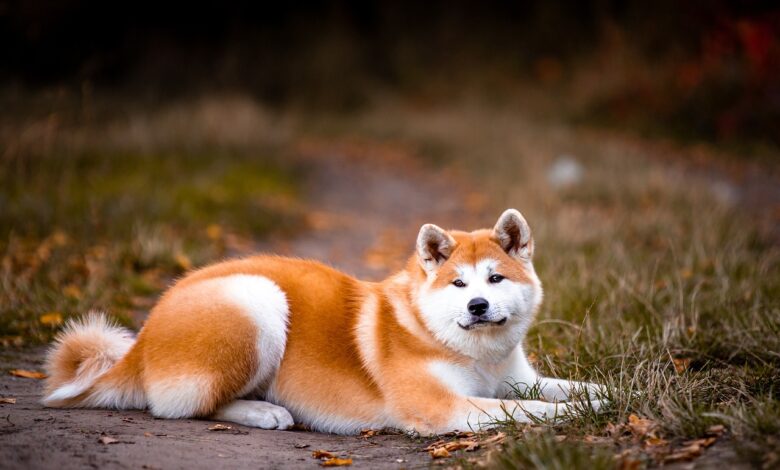How Often Do I Take an Akita Outside to Pee?

Akitas are known for their majestic appearance, loyalty, and independent nature. Whether you’re a proud owner of a puppy, an adult Akita, or a senior Akita, one of the most crucial aspects of their care is ensuring they get enough bathroom breaks. But how often do you need to take an Akita outside to pee, and does this frequency vary with age? In this comprehensive guide, we will explore the factors that influence how often you should take your Akita outside to relieve themselves, providing guidelines for puppies, adults, and senior dogs.
Understanding the Basics
Before diving into age-specific recommendations, it’s essential to understand some basic principles about Akita bladder control and how they differ from other dog breeds. Akitas are a larger breed, known for their strength and independence, which can influence their bathroom habits.
- Bladder Capacity: Akitas, being larger dogs, typically have a larger bladder capacity compared to smaller breeds. This means they can hold their urine for longer periods, but it doesn’t mean they should be forced to do so for extended periods.
- Independence: Akitas are often more independent than some other breeds, and this independence can extend to their bathroom needs. They may not always seek your attention to let you know they need to go out, so it’s crucial to establish a routine.
- Training: Proper potty training is essential for Akitas at all stages of life. Consistent training helps them understand where and when it’s appropriate to relieve themselves.
With these factors in mind, let’s delve into how often you should take your Akita outside to pee, considering their age.
Puppy Akitas (8 Weeks to 6 Months)
Puppies are adorable bundles of energy and curiosity, and they’re also known for their limited bladder control. For Akita puppies between 8 weeks and 6 months old, the rule of thumb is to take them outside frequently, typically every 1 to 2 hours during the day. Here’s a breakdown of their needs:
- Frequent Outings: Puppies have small bladders and high metabolisms, which means they need to relieve themselves more often. Take your Akita puppy outside after waking up, after meals, after playtime, and before bedtime. Praise and reward them when they do their business outdoors.
- Crate Training: Using a crate can be a valuable tool for potty training your Akita puppy. Dogs generally avoid soiling their living space, so a properly sized crate can help them hold it until you take them outside.
- Watch for Signs: Keep a close eye on your puppy for signs that they need to go out, such as sniffing, circling, or restlessness. If you notice these behaviors, immediately take them outside to prevent accidents indoors.
- Gradual Increase: As your Akita puppy gets older, they will start to gain better bladder control. You can gradually increase the time between outings, but continue to be vigilant about their needs.
- Overnight Considerations: At night, Akita puppies may not be able to hold their bladder for an extended period. Plan to take them out once or twice during the night until they can sleep through without accidents.
Remember that potty training can be challenging, but patience, consistency, and positive reinforcement are key to success. With time and effort, your Akita puppy will learn to signal when they need to go out.
Adult Akitas (6 Months to 7 Years)
Once your Akita reaches adulthood, their bladder control improves significantly, and their bathroom needs become more predictable. Adult Akitas typically require fewer bathroom breaks than puppies, but you should still maintain a regular schedule to ensure their comfort and prevent accidents.
- Schedule: For adult Akitas, aim for a consistent schedule of bathroom breaks. Taking them out every 4-6 hours during the day is a good starting point. This schedule accounts for their larger bladder capacity and improved control.
- Morning and Evening: Make sure to take your adult Akita outside first thing in the morning and before bedtime. These are the times when they are most likely to need to relieve themselves after a night’s rest.
- After Meals: After your Akita eats, it’s a good practice to take them outside within 30 minutes to an hour. Digestion can stimulate the need to eliminate.
- Regular Exercise: Providing regular exercise for your adult Akita can help them maintain their bladder health. A tired dog may have less urgency to go out during the day.
- Signs of Need: While adult Akitas are generally better at holding their bladder, they may still exhibit signs when they need to go out. Be attentive to their cues and take them outside promptly.
- Aging Considerations: As your Akita gets older, they may experience age-related changes that affect their bladder control. Keep an eye out for any signs of incontinence or changes in bathroom habits and consult your veterinarian if necessary.
Senior Akitas (7 Years and Older)
As Akitas enter their senior years, they may face some challenges related to mobility and bladder control. It’s important to adapt your routine and accommodate their changing needs to ensure their comfort and well-being.
- Frequent Short Walks: Senior Akitas may have reduced mobility, so consider taking them on more frequent, shorter walks instead of one long outing. This can help prevent fatigue and accidents.
- Scheduled Breaks: Increase the frequency of bathroom breaks for senior Akitas to every 4-5 hours during the day. Pay attention to their signals, as they may need to go out more often.
- Senior Health Check: Regular vet check-ups become even more critical for senior Akitas. Discuss any changes in their bathroom habits, as these could be signs of underlying health issues.
- Incontinence Management: Some senior Akitas may develop incontinence issues. Consult with your veterinarian to explore management options, such as medication or special diets.
- Accommodations: Make accommodations at home, such as providing easy access to the outdoors and placing puppy pads or absorbent mats in areas where accidents are more likely to occur.
- Comfort and Patience: Senior Akitas deserve extra patience and care as they age. Be understanding of their needs and provide a safe and comfortable environment.
Conclusion
Taking your Akita outside to pee is a crucial aspect of their care at any age. Understanding their age-related needs and adjusting your routine accordingly is essential for their comfort and well-being. Remember that potty training and bladder control can vary from one Akita to another, so patience, consistency, and positive reinforcement are key to success at any stage of life.
In summary, here are the general guidelines for how often you should take an Akita outside to pee based on their age:
- Puppy Akitas (8 weeks to 6 months): Every 1 to 2 hours during the day, with overnight outings as needed.
- Adult Akitas (6 months to 7 years): Every 4-6 hours during the day, with additional outings in the morning and before bedtime.
- Senior Akitas (7 years and older): Every 4-5 hours during the day, with increased attention to their changing needs and potential incontinence issues.
By following these guidelines and adapting them to your Akita’s specific needs, you can help ensure that your beloved companion remains happy and healthy throughout their life.




![41 unique Great Dane names [with PICS!]](https://news7g.com/wp-content/uploads/2022/09/great-dane-g39f91a87a_1280-390x220.jpg)
